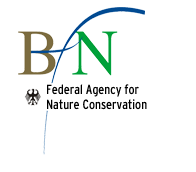Grün-Indikatoren
Monitoring of the indicator "green provision" and update of the national ecosystem service indicator "accessibility of public green spaces" in cities
Problem/Context
Many municipal initiatives are pursuing the goal of strengthening the green infrastructure of cities. The National Urban Development Policy of the Federal Republic of Germany also pursues this strategy. In order to be able to derive urban planning and nature conservation requirements in this context and to specify them in terms of area, quantification is necessary at a nationwide level.
Objectives
- Methodical further development of the application of the indicators "green provision", "green supply" and "accessibility of public green spaces in cities", especially with regard to the data basis.
- Comprehensive presentation of the methods and contents for the calculation of the indicators as well as presentation of the consideration regarding complexity and applicability (incl. limitations of the indicators).
- Recalculation (on the latest data basis) and comparison of time series (at least two time periods); presentation and discussion of the results.
- Final assessment of various databases for the calculations with recommendations for revision; review, discussion and, if necessary, modification of the threshold values. Publication of the indicators and monitoring recommendations
Literature (basic)
BBSR – Bundesinstitut für Bau-, Stadt- und Raumforschung im Bundesamt für Bauwesen und Raumordnung (Hrsg.) (2018): Handlungsziele für Stadtgrün und deren empirische Evidenz: Indikatoren, Kenn- und Orientierungswerte. Bonn.
Grunewald, K., Richter, B., Syrbe, R-U., Meinel, G. (2016): Bundesweite Indikatoren zur Erreichbarkeit öffentlicher Grün- und Freiflächen. Bewertung der Ökosystemleistung "Erholung in der Stadt". In: Naturschutz und Landschaftsplanung 48 (7), S. 218-226.
Krüger, T., Eichler, L., Meinel, G., Tenikl, J., Taubenböck, H., Wurm, M. (2021): Urban Green Raster Germany 2018 (Stadtgrünraster Deutschland 2018). (500 MB) [GeoTiff]. Leibniz Institute of Ecological Urban and Regional Development (IOER). https://doi.org/10.26084/IOERFDZ-R10-URBGRN2018
Meinel, G., Krüger, T., Eichler, L., Wurm, M., Tenikl, J., Frick, A., Wagner, K., Fina, S. (2022): Wie grün sind deutsche Städte? Bonn : BBSR im BBR, BBSR-Online-Publikation, 03/2022 https://doi.org/10.26084/ioer-2022urbgrn
Meinel, G., Krüger, T. (2014): Methodik eines Flächennutzungsmonitorings auf Grundlage des ATKIS-Basis-DLM, In: Kartographische Nachrichten 64(6): 324-331
Reinke, M., Blum, P., Kühnau, C., Böhme, C., Willen, L. (2023): Stadtnatur erfassen, schützen, entwickeln – Naturschutzfachliche Begleitung der Umsetzung des Masterplans Stadtnatur. Forschungs- und Entwicklungsvorhaben des BfN, FKZ 3519 81 1400 (Schlussbericht)


![[Translate to English:] Leibniz Gemeinschaft](/fileadmin/user_upload/ioer_de/img/logo-leibniz-gemeinschaft.svg)
![[Translate to English:] Dresden concept](/fileadmin/_processed_/2/1/csm_logo-dresden-concept_430c661ad7.png)

